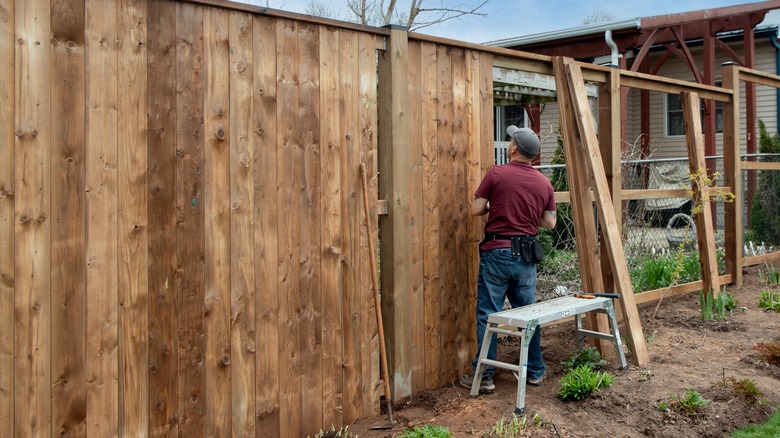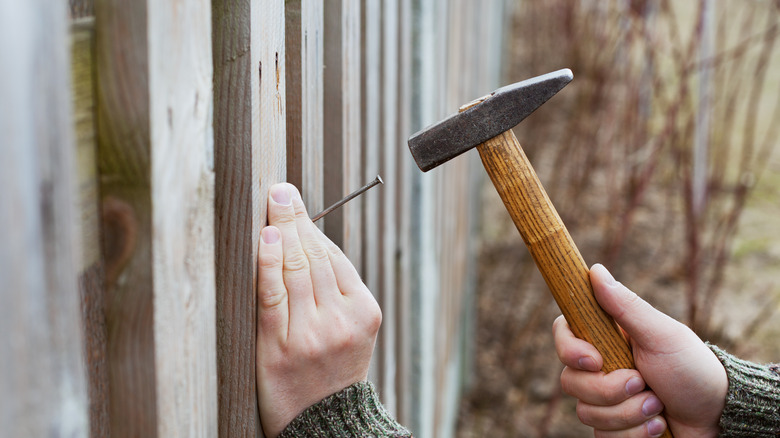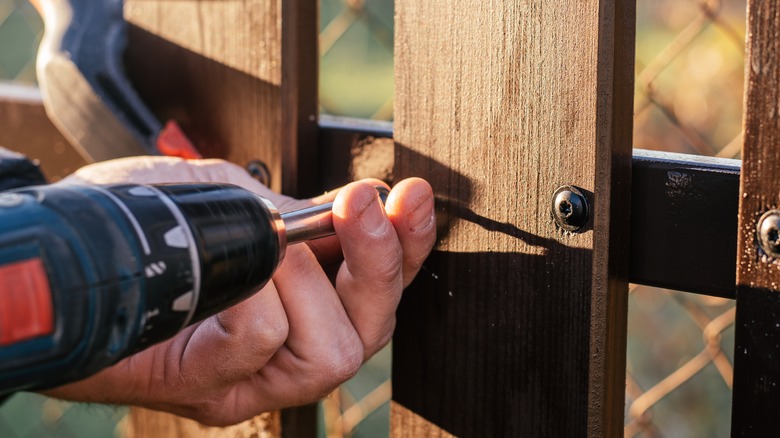Nails Vs. Screws: Which Are Best To Use When Building A Fence?
It's probably a question you haven't thought about until you're standing in the fencing aisle of your local big box hardware store: Should a fence be put together with nails or screws? You're sure you've seen it done both ways, but surely one has to be better? The truth is that screws and nails will both do a perfectly fine job of holding a fence together. Nails have some advantages, and screws have others. It all boils down to weighing the pros and cons of each against your preferences and your fence's particular needs.
This is partly a question about tools, and assembling a fence using hand tools like a hammer or manual screwdriver would be a nightmare. This leaves you with a tool choice between a drill driver/impact driver for screws and a pneumatic nailer for nails. For screws, a cordless drill is advisable, a tool every homeowner should have anyway, meaning you'll need a battery charger and at least one battery. The equipment required to drive nails includes the nail gun itself, a compressor, a hose, and a heavy-duty extension cord. Both are substantial investments if you don't already have the necessary equipment on hand, so cost could be a major factor for you in choosing between nails or screws.
How well does each hold a fence together?
Generally speaking, screws offer more tensile strength — resistance to breaking when they're bent — than nails, and they hold a load better without pulling free. But nails flex more readily and have more shear strength than screws, which means they're less likely to break when the joined surfaces are moving parallel to each other. Screws are also surprisingly weak when it comes to torsional strength, which measures their ability to remain intact when twisted. This isn't really an issue with nails at all, and isn't much of a factor with screw when building a fence, unless your drill's torque is set too high.
Choosing the correct type of nails or screws is important, too. You'll want outdoor-rated screws or nails that are properly coated, galvanized, or made of weather-resistant material like stainless steel or aluminum. Screws should have enough un-threaded shank to pull the wood together snugly when you tighten them, and nails will hold better if they have ring shanks. Both should have a substantial enough head to prevent the wood from pulling loose without pulling out the fastener itself. Ultimately, either fastener will be strong enough to hold a fence together under normal conditions.
How easy is it to use screws versus nails?
Putting up a fence involves attaching a lot of rails and pickets to a lot of posts and rails, which means that you're going to be driving a lot of screws or nails, regardless of what you choose. So consider which one you find easier to work with, and which suits your abilities and priorities.
For example, nail guns are faster than any drill/driver will be. On the other hand, screws are more forgiving than nails, since they can be removed and repositioned easily ... a major consideration if you don't have much experience assembling fences. Screw guns are a little harder to work with than a nail gun, which is a simple point-and-shoot affair. While nail guns have a built-in control to determine how deep you drive nails, you'll need a depth setter to get that consistency with screws. Finally, screws are slightly more likely to split thin boards like fence pickets unless you pre-drill pilot holes. This can slow down the process considerably. But don't rush yourself; driving screws is usually safer than using a nail gun, but if you get in a hurry, you can certainly injure yourself.
If you have both a cordless drill and the right type of nail gun for your project, you can use both screws and nails when building a fence, making the best use of each. That usually means nails for attaching rails to posts, and screws for attaching pickets to the rails. Whichever you use, with a little care and planning, either will do a great job.


